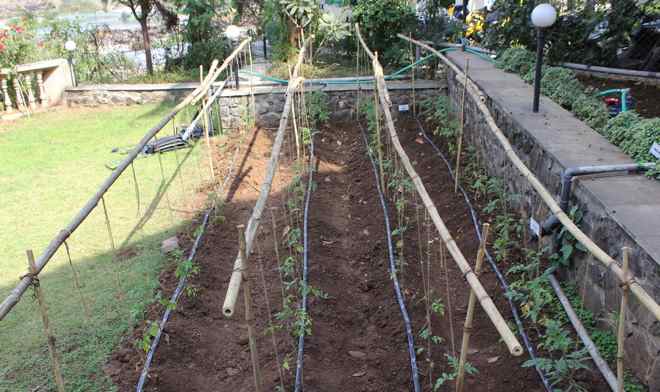Small-scale farmers face a number of challenges that make it difficult for them to increase crop yields and ultimately pull themselves out of the poverty trap. These include prohibitive input costs and the worldwide challenge of increasingly difficult, irregular, and unreliable access to water. It is important to address this water crisis given the fact that 70 percent of the world’s freshwater is used to irrigate crops. Likewise, proper irrigation is vital to ensuring sufficient crop yields. Given the importance of irrigation for food security, what new technologies can make irrigation more efficient and user-friendly?
Driptech’s drip irrigation technology is a newer, simpler version of drip irrigation technology which has existed for decades. It is better suited for smaller-scale farmers in a number of ways. It works using lower water pressure, relying on gravity instead of electricity and diesel pumps and their associated costs. This lower water pressure capacity means it is better suited to smaller farms. In contrast to existing technologies and their complicated emitter systems, it features a series of holes punched in the irrigation lines that allows for a more uniform distribution of water into the soil. Its cost is also reduced due to the fact that it is made from low cost-plastic tubing. According to studies, these features have combined to improve yields by up to 50 percent.
As long as they have existed, access to older drip technologies has been limited. Older drip irrigation designs are expensive and better-suited for large-scale farmers who can afford the necessary electricity and large pumps needed for older drip irrigation models. Even for farmers who can afford the existing drip irrigation technologies, the technology itself presents a number of problems; it tends to be too complex to maintain and frequently clogs. Driptech helps small-scale farmers to overcome these problems.
U.S. Agency for International Development (USAID) Administrator Rajiv Shah says that Driptech is an innovative, affordable, and simple-to-use technology which should be scaled up to increase production and incomes for smallholder farmers. Global water usage in many parts of world is currently unsustainable due to changes in rainfall patterns and greater demand. Water is projected to become more scarce in the coming decades; in fact, water use has grown at more than double the rate of population increase over the last century. Given these challenges related to increasing water scarcity, Driptech can be a technology that helps farmers save up to 30 percent water of water compared to other irrigation systems.
Many farmers are unable to utilize existing irrigation systems either because they cannot afford to utilize them, they are dilapidated, too complicated to use given current labor demands and constraints, or not suited for a particular crop. Thus, in many developing countries, farmers are either dependent on rainfall or if they can control the irrigation without complex infrastructure, they have tended to rely on the traditional practice of flood irrigation, which can be very water-inefficient. For many crops, this practice wastes water without necessarily increasing yields. Flood irrigation can also be very labor intensive. Driptech, however, can save as much as 80 percent in labor costs while it is relatively easy to install and maintain and can be relatively affordable for small-scale farmers facing financial constraints. It has been shown to reduce costs of watering an acre of land by one fifth.
This innovative technology is a tool that many farmers could potentially use to address their food production, water-usage, and labor challenges.















